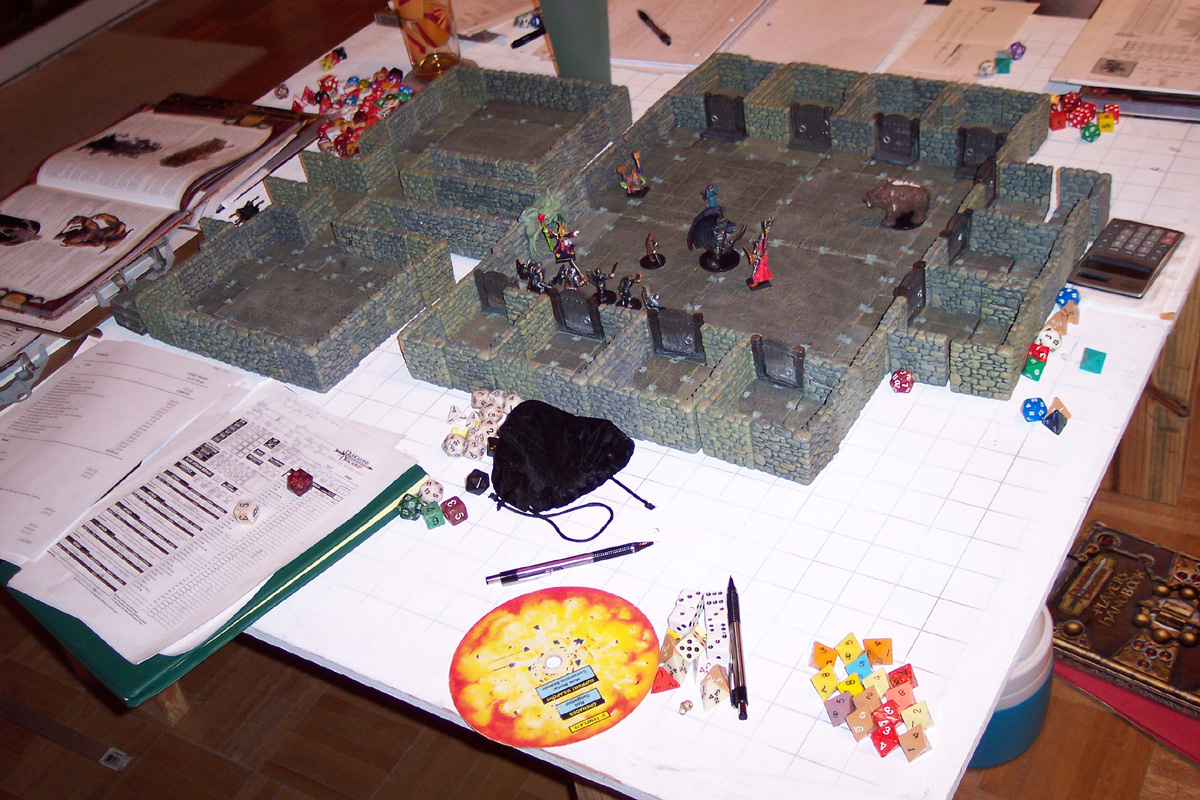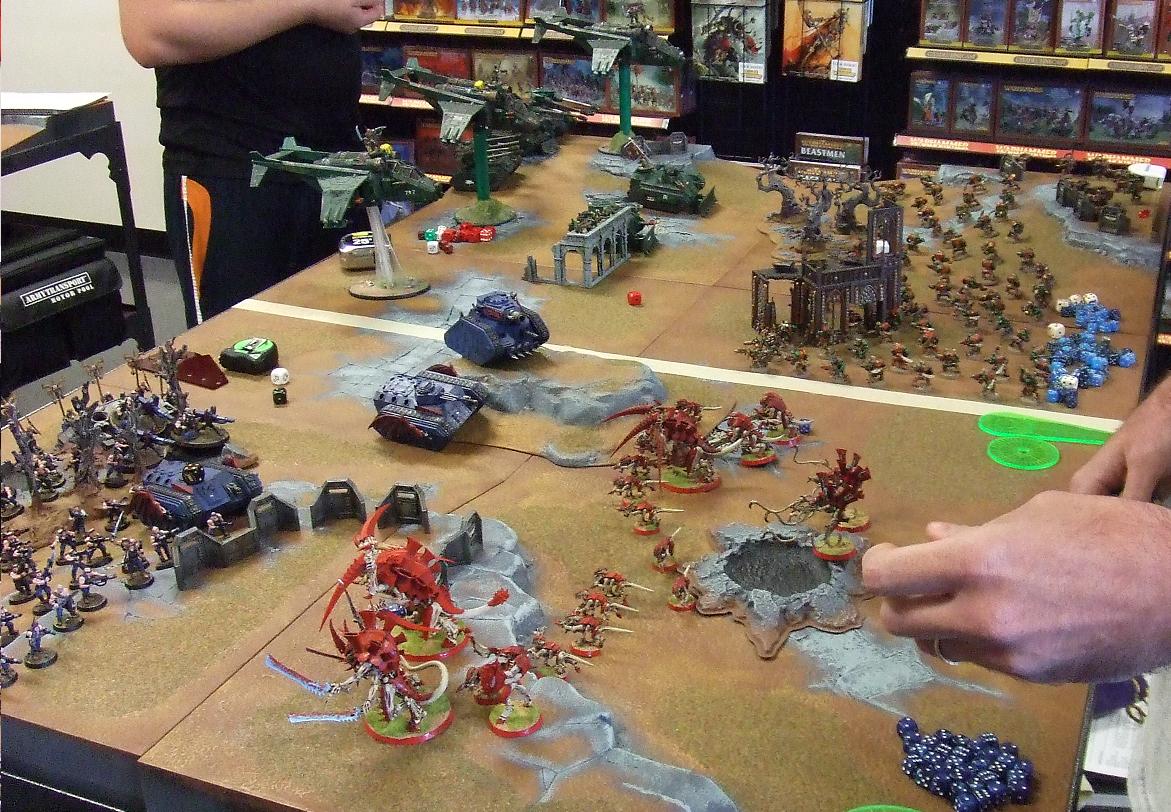If you’ve ever asked: “What is a Tabletop game”, you aren’t alone. Many people would take board games as an example of all tabletop games. While board games do make up the majority of these genre we should also include: card games, dice games, tabletop role playing games, Strategy games, tile games and the slightly out-of-fashion paper and pencil games. As the name suggests, tabletop games are pretty much any game you can play on a table top. In this article, we’re going to summarise these different sub-genres and give a few examples that you might want to try out with your friends.
Table of Contents
- Board games
- Tabletop RPGs
- Strategy Games/Miniatures
- Card games
- Dice games
- Tile games
- Pen and Paper Games
- So, What Is a Tabletop Game?
Board games
Board Games are pretty straight forwards, some of the earliest and best-selling games include chess, draughts and backgammon. The best thing about board games is that they are self-contained and often a one off price. When you buy the game of monopoly, For example, you buy the whole game and do not need to buy an extra’s – which we will discuss later. Recently expansions have become quite common for board games (Villainous has 5!) and while they add to the experience, they’re not essential.
Board games have a huge amount of variety. First, you can play the two player game Patchwork, which is all about solving Tetris like puzzles against your opponent. Next, you move to a murder mystery like Cluedo. A huge amount of film and television franchising happens in board games, Star Wars and A Game of Thrones are some of the best examples.
You don’t even need two players to play board games. Games like Coffee Roaster are game dedicated to the single player experience. Most other board games have a “single player mode”, but to be honest they’re much more enjoyable in groups of three or more.
Board Games are great for party nights, but also just to stave off a rainy day and pass a bit of time. Just watch out, they do take up a lot of space, so you’ll need to figure out a way to store them properly.

Tabletop RPGs
Dungeons and Dragons (D&D) is the most popular tabletop RPG game in the market and recently celebrated 50 million players in 2020. The defining element of these RPGs, or, Role Playing Games, is the creation and development of a character.
The Character creation element of this sub-genre is hugely important as it impacts the rest of the game. In D&D for example some characters have resistance to certain damage types. In this vein, the Dragonborn race has a resistance to fire because, well, they’re dragons – makes sense right?
The most attractive feature of these types of games are the customization. It gives players freedom to improvise and their choices directly influence the direction of the game. However, in order to get a well-rounded experience you must dedicate a significant of time to the campaign. The typical campaign will be around 6 hours, the shortest 3, and the longest a full day or more. Its important therefore the play with people who are genuinely interested in the game, because people who aren’t are likely to get bored.
Dungeons and Dragons is not the only example of the genre. Other games include: Call of Cthulu, Vampire the masquerade, and Magic Realm.
Due to the fact that these games are so nuanced and flexible they can be quite complicated. This shouldn’t put new players off, but if you sit down and think “what in the world is going on?” you won’t be the first and you won’t be the last!

Strategy Games/Miniatures
Strategy games are in a lot of ways similar to the Tabletop RPGs we’ve just described. The key way in which they differ is that they are not building a narrative or world in the same way they players do in D&D. Typically in a tabletop sense these games will find themselves in the wargame subset and the most popular of these is the Warhammer franchise by Games Workshop.
Miniature tabletop gaming has incredibly strong and tight-knitted communities. Of this list it certainly is the closest to a hobby. In Warhammer, for example, you will spend a lot of time building, painting and eventually playing with the models. Some people enjoy this process, but others find it hard that there is a time investment upfront before you can even start playing the game.
As fun as miniature gaming is, it can also be quite expensive. The models are necessary to play the game, the plastics – and even more expensive metals – that go into this have a manufacturing cost attached. The typical Warhammer army costs around £350 to start and this is the most bare bones possible. True fans of the genre have spent in the thousands having rosters of multiple armies and factions. But ultimately, if that’s what you enjoy, more power to you!

Card games
The French Suited 52 card deck that we all know and love now have been around since the 15th century. In that time hundreds of games have been invented, played and improved upon. The beauty of card games is they’re portable, their flexible – in the sense that one deck can host many games – and they’re instantly recognisable.
Almost anyone you meet can name and often play at least one card game. Go Fish, Rummy and Blackjack are games that comes quickly come to mind. In addition, there are card games for all skill sets, be it a simple children’s game like snap, or a complicated, stress inducing round of texas hold’em.
Not only this, but decks of cards are cheap, you can buy the cheapest decks for £1 and the top range are up to £10. Many businesses even give cards away for free and place their advertisements on the back they’re that simple to make.
A deck of cards should be a staple in any home because its literally hours of fun at little to no cost.

Dice games
Dice games are quite interesting because they are the most luck-based games of the list. The most popular dice game is Yahtzee with over 50 million sales per year. Similar to card games the benefit of these games is that they’re incredibly portable. As they are mostly luck based this also opens them up to beginners as there does not need to be a minimum skill level.
Dice games are on the less common side in the tabletop genre overshadowed by their bigger brother board games. However, Liar’s dice made an appeared on the big screen in Pirates of the Caribbean Dead man’s chest.

Tile games
Tile games are on the less common side, but that doesn’t meant they don’t have their place. In the west Rummikub and Dominos are hugely popular. Although it seems for the latter, dominos, they aren’t always used as the way they’re intended and instead intricate patterns to cascade, but these are pretty cool in their own right.
In the East, Majong is the most popular tile-based game. However, after the spread of this game to the west in the late 1900s we now how around 600 million players worldwide.

Pen and Paper Games
Since the advent of the smartphone many popular pen and paper games have been made into apps. Their simplicity made it easy to emulate for the apple and android stores. We have all probably played some of these games in glass when we weren’t meant to – or on a misty window.
Popular games include hangman, tic-tac-toe and boxes. Unsurprisingly, one of the most attractive features of these games are short set up times, and cheap cost. All you need in pen and some paper!

So, What Is a Tabletop Game?
This was just a short introduction to defining what a Tabletop game is. They encompass much more than one would initially think. I’m a big fan of card games just due to their flexibility, you can play so, so many games with just a standard deck – what’s really exciting is when you play with 2 decks at once in games like Machiavelli! In a close second place I would put board games, they’re their self-contained gaming experience and it’s clear to tell when the designer has put good thought into all aspects of their game.



